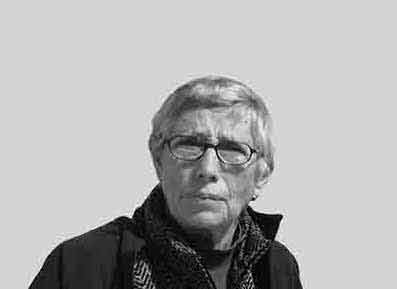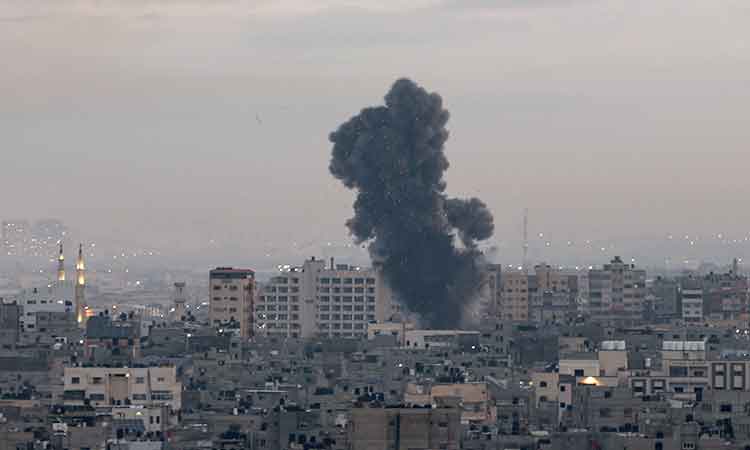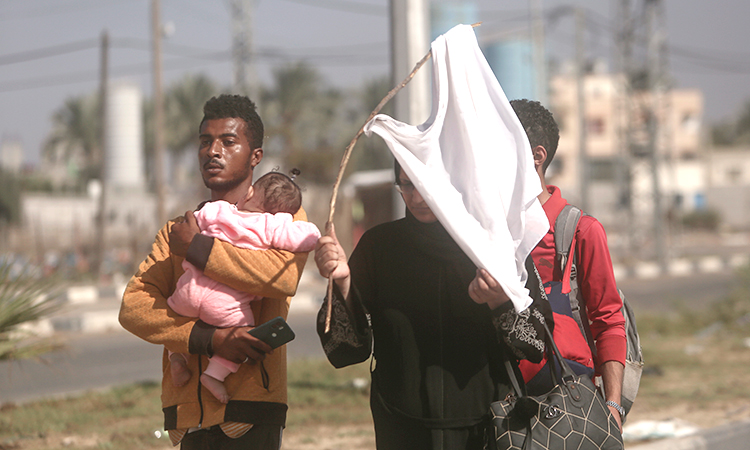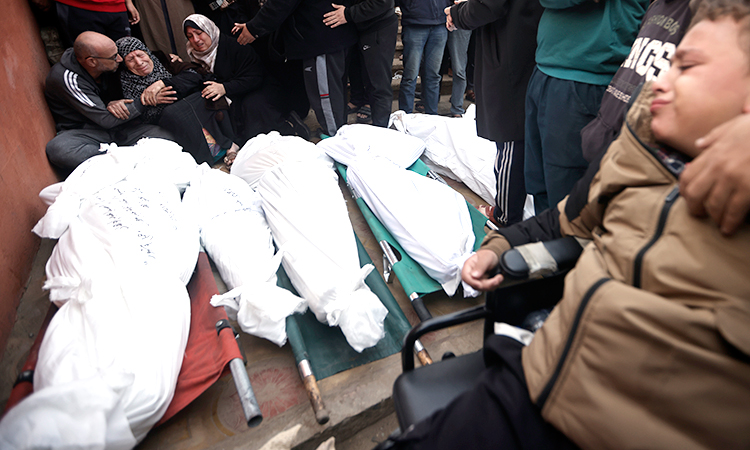Artefacts show Palestine’s rich culture and history

Michael Jansen
The author, a well-respected observer of Middle East affairs, has three books on the Arab-Israeli conflict.

A view of the the 'Al-Madhaf' museum in the Gaza Strip.
The museum, a large rectangular room, holds 350 pieces of pottery, glass objects, tools and sections of marble columns from the Greek, Roman, Byzantine, Islamic and Crusader periods. His aim is to show Palestinians from Gaza that they have a rich culture and history despite their current trials and travails under Israel’s cruel, deadly and destructive occupation. Attached to the museum was a garden restaurant with a view of the sea and a children’s play area. During my brief visit, a bus arrived, school children alighted and visited the museum before being turned loose on the play ground and sitting down to a snack and juice at the restaurant. For many of these children, most of them refugees, this was their first visit to a museum and, perhaps, to a seaside cafe; their first chance to experience outings children elsewhere enjoy from time to time. Some of those Palestinian children I saw sitting at tables sipping their drinks may well have been killed or made homeless by Israel’s brutal offensive a few months later. Al-Madhaf was struck by Israeli mortars, and shrapnel and pottery shattered.
Al-Madhaf is no longer Palestine’s exceptional museum. In May 2016, the Palestine national museum opened in Bir Zeit, 25 kilometres north of Jerusalem. At first there was only a $30 million (Dhs110m) building with no exhibits — the opposite of Gaza’s al-Madhaf. Visitors were ushered around the elegant, contemporary building, designed by Heneghan Peng, a Dublin firm, its terraced garden and outdoor amphitheatre both dominating and blending into a hilltop on land donated by Bir Zeit University.
Since its inauspicious inauguration, the museum has mounted a number of exhibits designed to connect Palestinians living at home under occupation with those in the global diaspora. The museum houses rotating exhibitions as well as permanent collections and serves as a hub for cultural outreach to the region and the world.
In April of this year, the museum hosted “Intimate Terrains,” an exhibit Showing Palestine’s changing landscape from 1920 to the present as depicted by 36 Palestinian artists from occupied Palestine and the diaspora. The 87 works displayed included photographs, installations, video, film and sculptures depicting Palestinians’ connections with their land and their loss as Israel systematically seized the land and exiled its owners. Paintings featuring women in traditional dress represent both Palestinians at home in idealised settings and the sufferings of alienation, dispersal and exile.
One artist, Taysir Batniji, displayed work entitled “Gaza houses,” consisting of photos taken after the Israeli bombardments of 2009 with each ruined home portrayed as a real estate advertisement featuring its selling points.
The “glass gallery” displayed leaflets, poems, timelines and legal documents exposing erasure, loss, fragmentation of the landscape and people and resistance countering the favourable image Israel has cultivated in the West and elsewhere. Many of the artists involved are banned by Israel from travelling to Palestine.
The opening of the exhibition also commemorated Land Day, March 30, 1976, when six Palestinian citizens of Israel were killed in the Galilee while protesting and striking against confiscations of thousands of acres of Palestinian land.
The plan to create a museum was adopted in 1997 by the diaspora-based Welfare Association with the aim of memorialising the Naqba, the catastrophe that overtook Palestine and the Palestinian people during and after Israel’s war of establishment in 1948. The plan expanded to incorporate Palestine’s history, society, culture and art from the beginning of the 19th century when Palestine was still a possession of the Ottoman empire.
There was, and is, urgent need for a Palestinian national museum — as there was in Gaza for al-Madhaf. Palestinians are involved in an existential struggle with Israel which seeks to erase proof of their ownership of the land, disappear them from the landscape and deny their identity. As long as Palestinians exist, they challenge Israel’s existence and right to exist. No country on the face of the globe has a right to exist. Countries have territory, populations, borders and recognition. The existence and presence of stateless Palestinians in Palestine undermines Israel’s legitimacy. Early Zionists claimed they wanted to secure Palestine, “a land without a people for a people without a land.” This was always an enterprise based on fraud because it was destined to root out the natives of Palestine, which was never a “land without a people.” The Zionists have done their utmost to ethnically cleanse Palestinians from their land, but at this point in time, nearly half of the world’s Palestinians continue to cling to the land which upholds their identity as the indigenous population, as Palestinians. The museum provides a means for Palestinians to explore their past history and come to conclusions about their peoplehood and guide them in their struggle for a future.
In August the museum was declared a winner of the 2019 Aga Khan Award for Architecture, which is presented every two years by the Aga Khan Foundation. “The selection of the Museum was due to its powerful embodiment of cultural identity under duress at the intersection of land and architecture, nature and people,” the jury stated when announcing the awards.
The other projects honoured were in Bahrain, Bangladesh, Tartarstan, Senegal and Sharjah, where the Wasit Wetland Centre, a project to renovate a chain of wetlands along the Gulf coast, is located.







